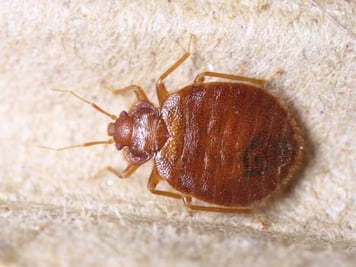Bed Bug Exterminator Houston Services: Specialist and Effective Treatments
Wiki Article
Reliable Insect Control Procedures to Secure Your Yard and Plants
In the world of gardening, the harmony of a well-tended yard can often be interfered with by unwanted insects that threaten the health and wellness and vitality of plants. Executing effective bug control determines not only safeguards the yard's aesthetic charm yet also plays a crucial role in protecting the plants' well-being.Natural Parasite Repellents

An additional reliable all-natural pest repellent is diatomaceous planet, a fine-grained substance made from fossilized water microorganisms. Diatomaceous planet jobs by physically harming pests with its unpleasant structure, making it an exceptional choice for managing insects like slugs, beetles, and caterpillars. Additionally, planting companion plants like marigolds, lavender, or basil can aid repel parasites due to their strong scents or natural chemical substances.
Beneficial Pest for Bug Control

One more helpful pest is the parasitical wasp, which lays its eggs inside parasite bugs, eventually eliminating them. Ground beetles are excellent for controlling caterpillars, snails, and slugs. Hoverflies, frequently mistaken for due to their similar look, feed on aphids, thrips, and caterpillars.
To draw in beneficial bugs to your yard, you can plant a varied range of flowering plants, such as dill, fennel, and yarrow, which provide nectar and pollen for grown-up pests. In addition, prevent utilizing broad-spectrum pesticides that can harm both harmful and useful insects. By creating an inviting setting for these helpful bugs, you can lower the need for chemical pesticides and promote a much healthier, a lot more well balanced garden environment.
Friend Growing Techniques
When aiming to enhance the performance of helpful insects in your garden for natural pest control, thinking about companion planting strategies can further enhance the ecological community equilibrium. Companion growing involves strategically putting certain plants following to each other to optimize their mutual advantages, such as discouraging bugs, attracting valuable bugs, or boosting vitamins and mineral uptake - bed bug exterminator houston near me. One popular example is planting marigolds along with tomatoes to ward off nematodes and other hazardous insects while also bring in pollinatorsPlanting trap crops like nasturtiums can divert pests away from your main crops, serving as sacrificial plants that protect your useful produce. By carrying out buddy growing methods, you can create a varied and unified yard ecosystem that normally manages pests while promoting plant health and wellness and performance.
DIY Parasite Control Solutions
To successfully manage pests in your garden, implementing do-it-yourself insect control look these up remedies can be an affordable and eco friendly method. One usual do it yourself insect control option is developing homemade insecticidal soaps by blending moderate soap with water to manage soft-bodied pests like aphids, mites, and whiteflies. Additionally, presenting beneficial pests such as ladybugs, lacewings, and aggressive wasps can aid normally control insect populaces in your garden. Establishing up physical obstacles like row covers or netting can additionally protect against pests like caterpillars from damaging your plants.Friend growing specific herbs and flowers like marigolds, basil, and lavender can assist fend off parasites and draw in advantageous pests. By integrating these Do it yourself insect control solutions into your horticulture routine, you can safeguard your Continue yard and plants without relying on rough chemicals.
Environmentally-Friendly Pesticides

Another efficient choice is diatomaceous earth, an all-natural substance made from fossilized marine organisms, which can be sprayed around plants to manage slugs, snails, and various other creeping bugs. In addition, insecticidal soaps and oils stemmed from plant-based sources work for regulating soft-bodied insects like aphids, termites, index and whiteflies.
Conclusion
In verdict, efficient parasite control actions such as natural repellents, valuable pests, companion planting methods, DIY solutions, and environmentally-friendly pesticides are vital for safeguarding your garden and plants. By applying these techniques, you can prevent damages brought on by parasites and preserve a healthy and balanced and successful garden environment. It is very important to think about the long-term effect of using pesticides and opt for more lasting and green options to make certain the health and wellness and health of your plants and the environment.Report this wiki page